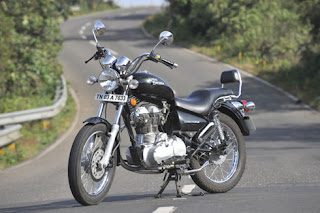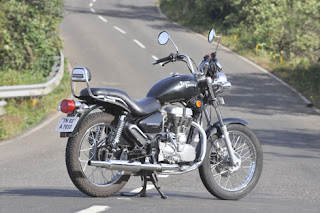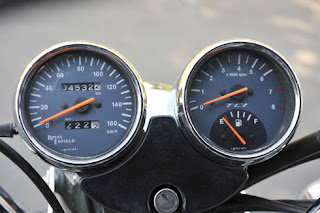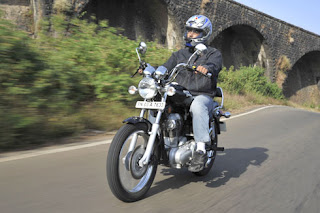Uncategorized
ROYAL ENFIELD THUNDERBIRD TWINSPARK 350cc REVIEW / ROAD TEST & SPECIFICATIONS
Royal Enfield launched its new bike the Thunderbird Twinspark in 2008. But it was under some serious scrutiny by Bajaj Auto Ltd because of the name and the twin spark technology. Bajaj patents the twin spark technology and it had previously filed a suit against TVS motors for the same reason. But according to Royal Enfield they have not breached the patent copyrights as it holds good for 75 and 250 cc engine bikes whereas the Thunderbird is of a 350 cc version and they plan to incorporate the same technology in their future series of bikes too.
The fuel tank is sheet-metal, and the overhang welded below it is a blemish, while the fuel tank cap looks dated. The Twinspark does well to offer slow- cam chain adjusters, as compared to the more predictable system provided on most Indian models.
The Twinspark benefits from TCI ignition for a fine spark. You get 2bhp more, for a figure of 19.8bhp, and 2.85kgm of torque, which is a insignificant 0.1kgm more than the older version.
Start it and you instantly notice a smoother feel near idle. The handlebars don’t judder in your hands just yet. Select first gear and as you let the clutch out, it feels a bit improved. A six-plate clutch instead of four makes the difference. As you hasten through the gears, this smoothness unfortunately diminishes however, to be replaced with Royal Enfield characteristic vibrations, Which is where it goes from bad to worse, and it’s apparent that thrashing the engine is not the way to ride this bike.
Fuel economy is not a subject of relevance among Royal Enfield bike lovers, who will buy the Thunderbird Twinspark more for its lifestyle value, than economy.
For the record, the Twinspark returns 35.7kpl in the city and 36.8kpl on the highway.
BTW according to company the fuel efficiency ranges anywhere between 45-50 kmpl.
Ride & Handling :
The new bike has an integrated gearbox that produces only 10% more power and torque compared to the previous Bullets. So, there is not much to rejoice. It generates a maximum power of 20 bhp and the maximum torque is 28Nm. For an instant halt the bike requires 150/280mm brakes.
The shifting of the rear brake has become easier. The suspension is not satisfactory; it is slightly stiffer but gets better with a pillion rider. Stability on straight lanes remains good but riding into curves isn’t any great. The front tyre seems to skid while breaking that causes some kind of discomfort. The bike is recommended for city riding and for a rare long drive too.
The Thunderbird uses known, large, kicked-out forks and an extended single-downtube frame. Its gas-charged dampers at the rear are par for the course for motorcycles in India, but even on their softest setting tend to jump when pushing the bike to its edge. These work best when the bike is overloaded.
The Thunderbird Twinspark is somewhat a burden in city traffic, but a steady bike on the highway thanks to its 19-inch rims. The handlebars do provide ample weight for city riding, but there is no dodging this bike’s rangy wheelbase and heft in the city.
The new Thunderbird Twinspark will not have a mad following like we see for Pulsars or Karizmas but is liked by people who already own a bullet and those who do not have one but have a liking for the brand. You might not see 100s and 1000s of these on roads, but one on road and it is a head turner.
The Royal Enfield Thunderbird Twinspark is available in three colours: Silver, Black and Red and is handsomely priced at Rs 103000.(price quoted from year 2009)
At Rs.1,00,000+ the bike is not cheap, but it is a legend cloaked in modern wizardry. Enfield claims the Thunderbird TwinSpark is maintenance free though only time will tell, as it is too early to comment on this.
Verdict :
But looking at the Thunderbird Twinspark as such is missing the point totally. It is a bike you buy with your heart.
| Engine | Single Cylinder, 4 Stroke, OHV, Dual Spark Ignition Engine, Air Cooled |
| Displacement | 346 CC |
| Bore x Stroke | 70mm x 90mm |
| Maximum Power | 19.8 bhp @ 5250 rpm |
| Maximum Torque | 28 Nm @ 4000 rpm |
| Transmission | 5 Speed (left foot gear shift) |
| Ignition | Digital TCI (Transistor Coil Ignition) |
| Carburetor | BS29 / UCAL |
| Dimensions | |
|---|---|
| Ground Clearance | 135 mm |
| Width | 780 mm |
| Wheel Base | 1370 mm |
| Length | 2120 mm |
| Height | 1080 mm |
| Tyres | |
| Front | 3.25 x 19″, 6/4 PR |
| Rear | 3.5 x 19″, 6/4 PR |
| Electricals | |
| Electrical System | 12 Volts |
| Head lamp | 35W/35W Halogen, MFR |
| Brakes | |
| Front | Hydraulic Disc Brake (Disc dia 280mm) |
| Rear | Internal Expansion (Drum), 6″ |
| Maximum Speed | |
| Speed | 120 Kmph |
| Suspension | |
| Front | Tele Scopic With Hydraulic Damping. Stroke 130mm. |
| Rear | Swing arm With Gas Shock Absorbers stroke 80mm |





